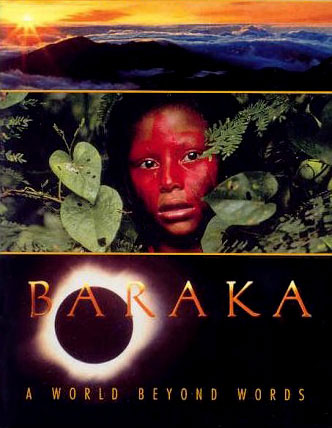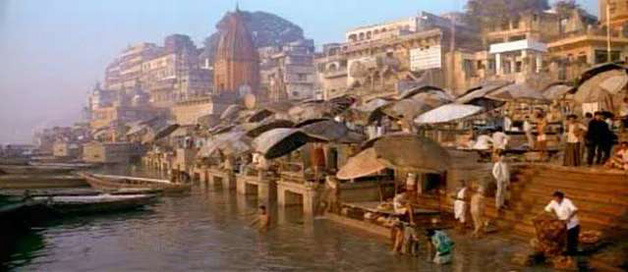BARAKA
 |
| By Roger Ebert
In this world of wonders there are still places that have not been smoothed over with the shallow surfaces of Western commercialism. The amazing thing is not how widely the McCulture has spread, but how many corners it has missed. It is claimed that the great age of travel is dead - that there are no longer amazing, exotic, beautiful and fearsome places for the traveler to discover. A movie like "Baraka" gives hope. On one level, the film is a 96-minute travelog. On another level, it is a meditation on the planet. The director, Ron Fricke, has taken his 70-mm camera all over the globe to photograph natural and human sights. Some of them are as ordinary as the traffic in Manhattan. Some are as awesome as a solar eclipse. Some are as desperate as the tribes of scavengers scuttling like crabs over the garbage dumps of Calcutta. |
 Somehow the technique makes the earth and its inhabitants seem touchingly fragile. Against this fragility, man has raised the bulwark of religion, and Fricke's cameras show us man in the act of worship, from the Pope in St. Paul's to rabbis at the Wailing Wall, from monks in ancient temples to an extraordinary tribe of chanters who lean this way and that in time to their prayer, waving their arms like trees tossed in a storm, led by a man who seems immensely pleased to be in the center of such ecstasy. The music has been written by Michael Stearns, who plunders the riches of ethnic music and chants and combines those sounds with more Western ideas, so that the score becomes an anthology of the sounds man makes to keep away the dark and make the light s ensible. To listen to the sound track by itself, after seeing the movie, would be to evoke the souls of all of these strange places. Of course there is a "message" somewhere in "Baraka" - the same message we have heard before, about how man must love and respect the planet. This is a piety to which we all subscribe, so long as it does not mean any inconvenience to us personally. Few people wearing pro-ecology T-shirts, I imagine, ever think of becoming vegetarian so that grains can be used to feed all the mouths on the planet, instead of being converted into meat to feed a few. And few people seeing "Baraka" will make any major changes in their lives to respect the planet the movie celebrates. (I include myself among that number.) So the movie has the power of a dream, from which we awaken, instead of a warning, to which we respond. |
 |